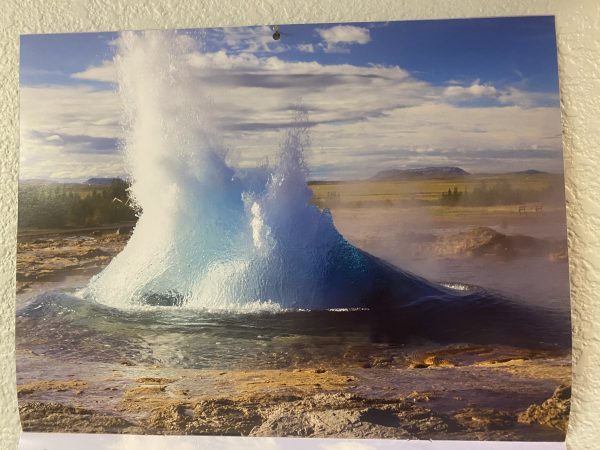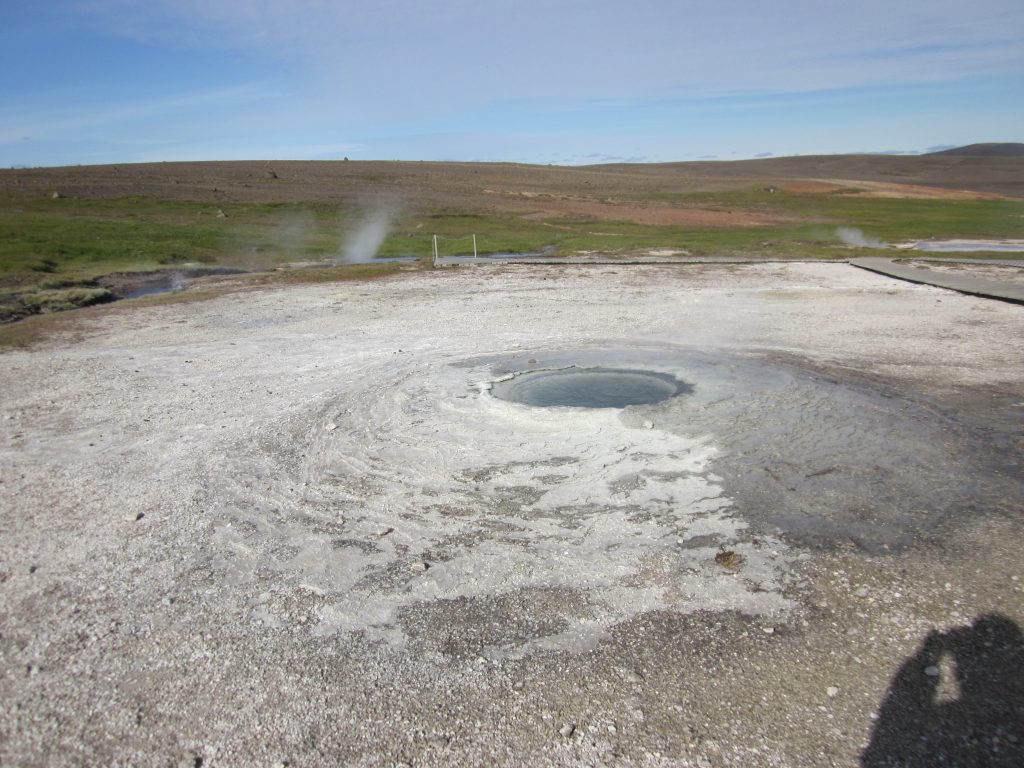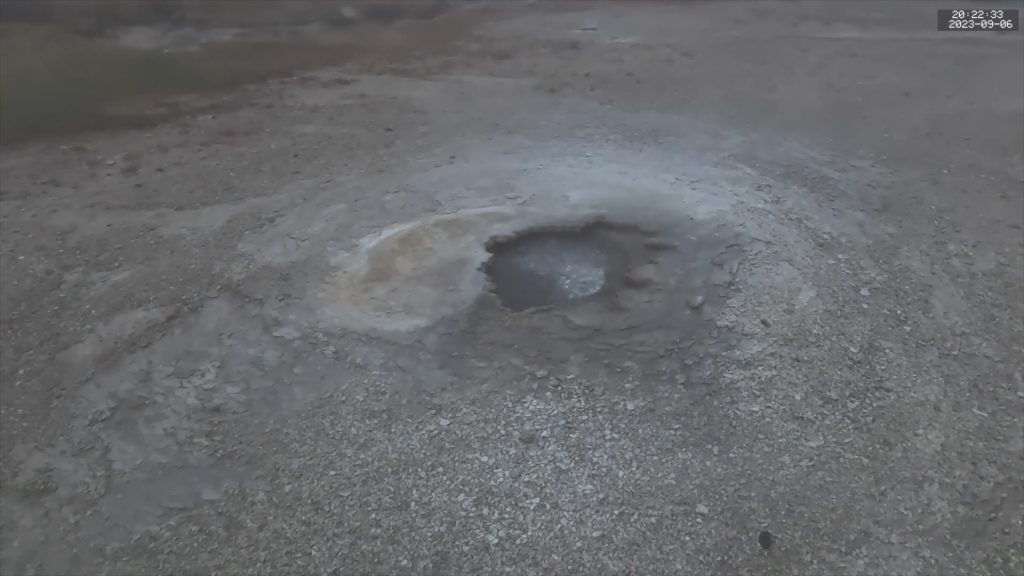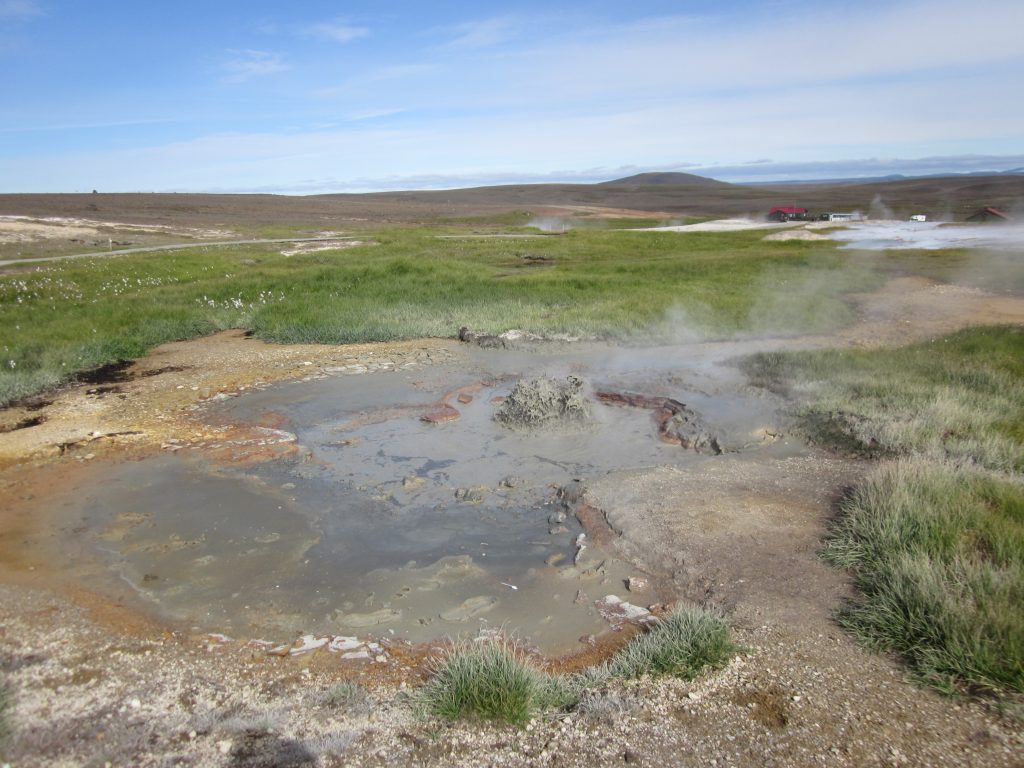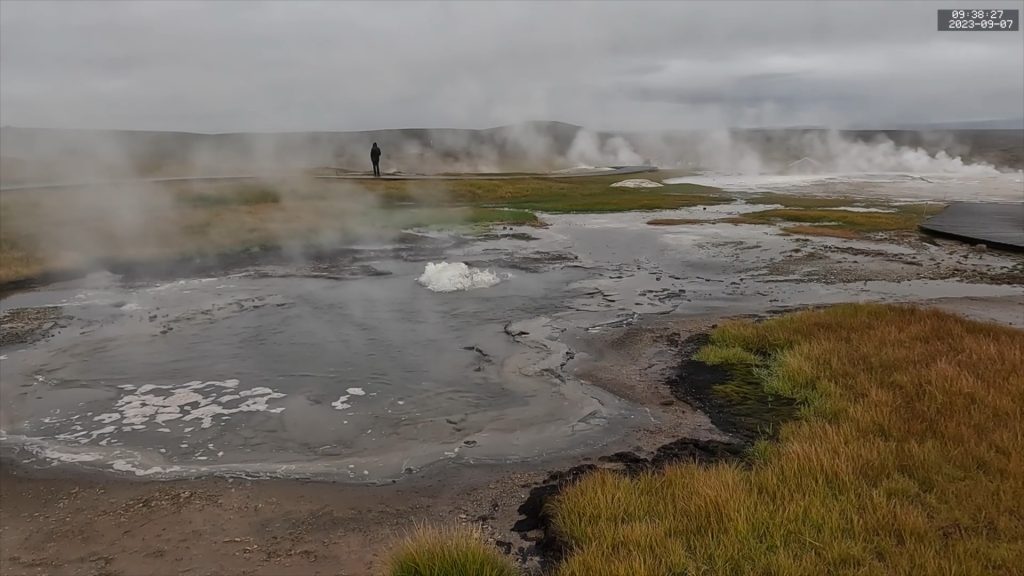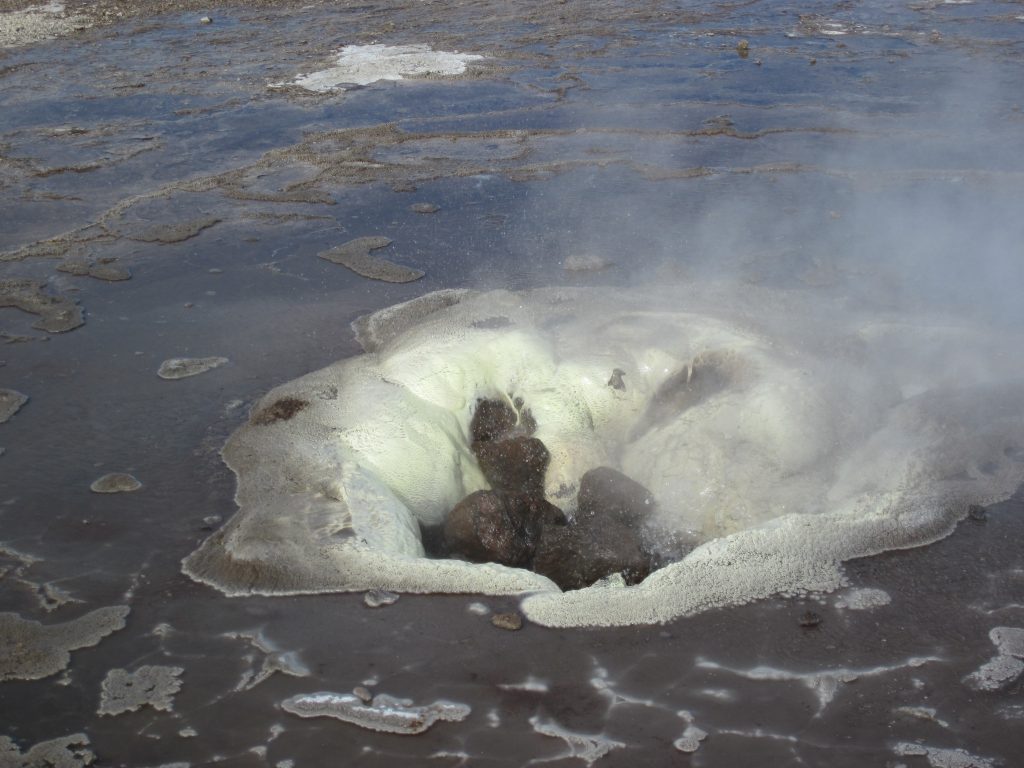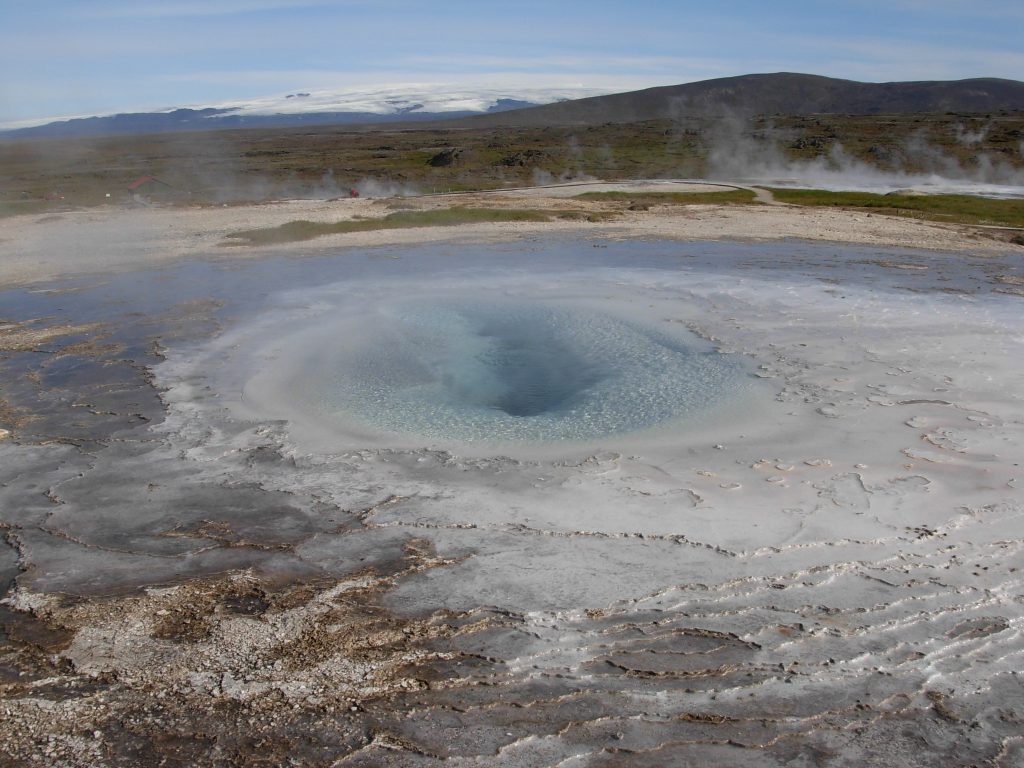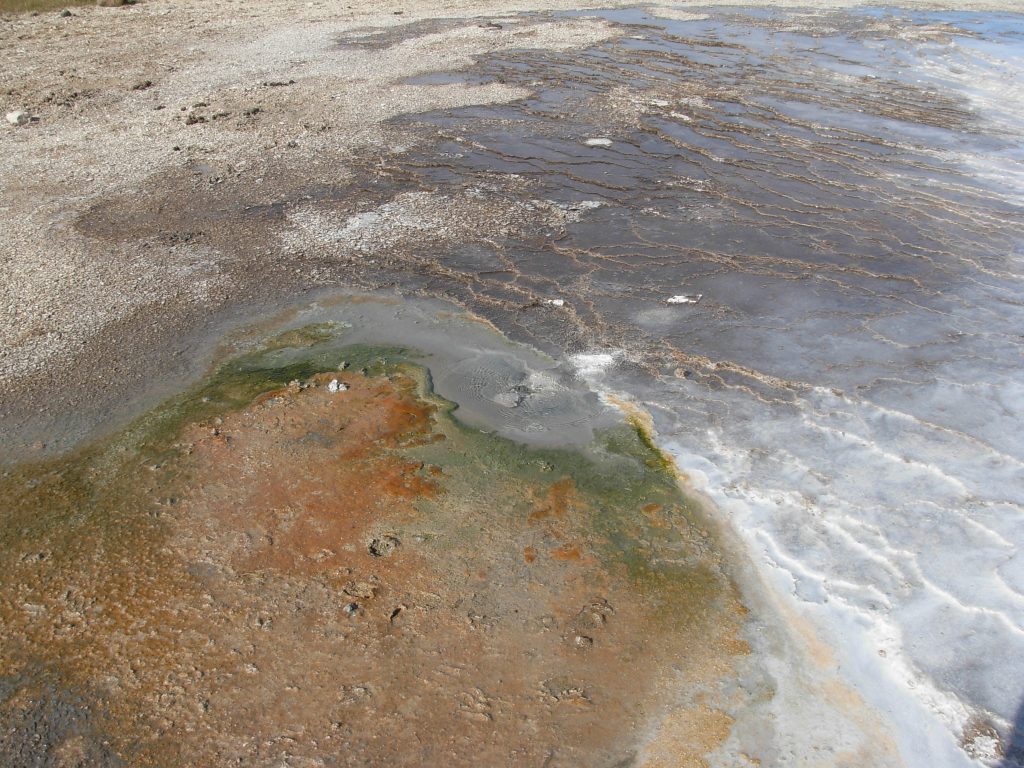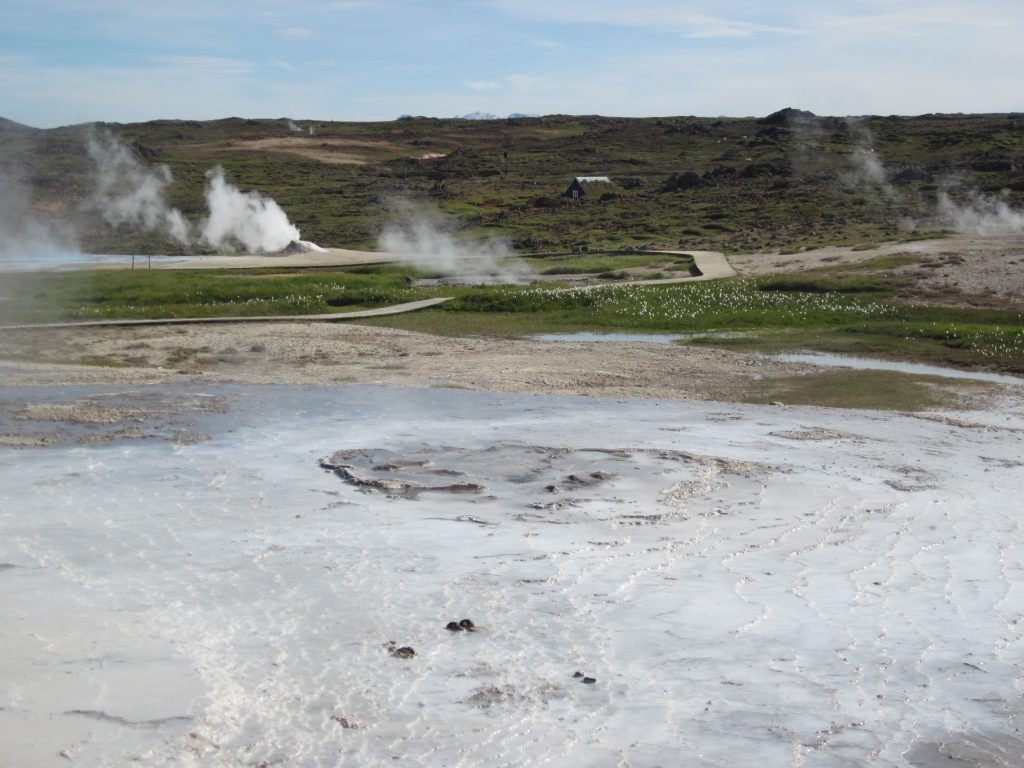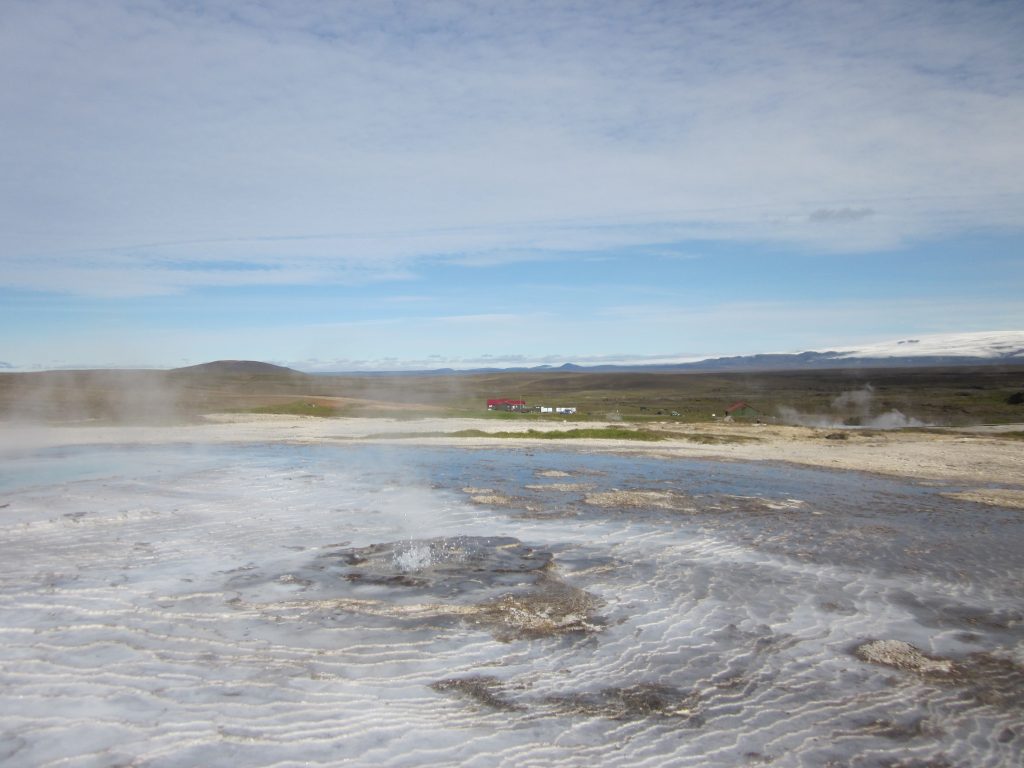Posted on
Posted on
Posted on
Guess the Geyser
Every year during our summer visits, Suzanne buys a Yellowstone calendar for the coming year. The new calendar went up in the hallway to the kitchen at the start of January, and the picture on the first month was labeled "Fountain Geyser".
Except when I saw it, I immediately noticed it didn't look quite right. More like Morning. But with all the post processing going on with photos, I figured that maybe that was it, combined with color changes and a telephoto shot to make it look really close up. Artistic, but not realistic?
But the more I saw it, the more I was convinced that it was not Fountain, but what? Then a week or so ago, I noticed something in the upper right corner that proved that not only was it not Fountain, or anything in the Fountain Group, but not even in Yellowstone.
It helped that I'd seen the same geyser activity back in September. What I saw was a bench, just like the ones around Strokkur. At that point, it all made sense. The shape of the water, the color of the formation, the trees and hills in the background.
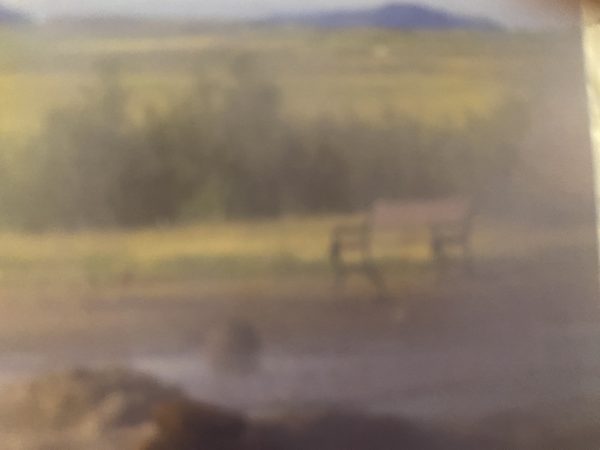
This sort of thing happened a lot back in the 19th Century. I have a whole series of mislabeled photographs, bought years ago when I was actively collecting such photos. Now I've got one more for the collection.
Posted on
GeyserLog 3.6
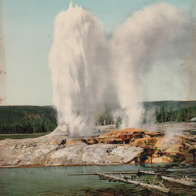
GeyserLog 3.6 is now available on the iOS AppStore.
This started out as 3.5.2, a bugfix and cleanup release. But it ended up with some new functionality.
The GeyserLog-Today widget has been removed, replaced by new WidgetKit blocks showing either Recents, Favorites, or Predictions. All three widget sizes are supported, and the wider Recents will include the display of notes.
The Watch app has been rewritten, and now includes a Predictions panel.
A new large Rectangular watch widget has been added, showing recent favorites eruptions. Like the Circular widget, which is still available, it will also record an observation in the app.
And, after way too much work, background refresh finally appears to be actually working as intended.
Posted on
Changes at Hveravellir, Iceland
Tara Cross recently sent me some photos that she took during her visit to Hveravellir in Iceland on 2011 August 26. There were a number of changes between her visit and our visit last year. She also wasn't aware of the map of the area and not sure about the exact locations of some features in relation to what we saw. But we were able to figure things out.
Most notable was the difference in walkways. Some have been removed while others added. This made identification of changed features a little tricky at first.
This is a view of Fagrihver. The walkway in the back went over to Meyjarauga, one of the more colorful springs in the area. The walkway is no longer there because Meyjarauga has filled in and disappeared. In the decade since this photo was taken, Fagrihver has roofed over much of the left portion of the vent, as the recent screenshot shows. So it too may disappear in the near future.
Rauðihver (Red Spring) was also erupting during her visit. It's not as full as what we saw last year, but the activity is from the same vent area. I've seen online videos taken a few years ago where this feature was a hot, blue pool. It must cycle between ugly and active, and pretty but quiet.
This is Eyvindarhver, a spring that was altered centuries ago so it could be used for cooking. (It's the closest spring to Eyvindar's shelter to the west.) Years ago it was known to behave as a geyser. The photo shows some splashing from what appeared to her to be a steamy perpetual spouter. For our visit, it was acting like a fumarole. There are videos from a few years ago of the fumarolic action being more powerful and noisier.
This is an overview of Bóluhver/Heimilishver, looking toward the east. There is now a walkway running along the boundary betweenthe runoff and the sinter area allowing a closer view of this feature and Gjósandi, which would be to the left.
This is H-204q, a small feature near Bóluhver/Heimilishver. It's not really visible from the current walkways.
This is H-204m. It's located near H-204q, and is a small geyser that Cross saw erupt while there:
I finally saw it at 1445 erupting to 1 to 2 feet with a duration [of] about 2 minutes. It erupted again at 1524, refilled at 1533, and had periodic bubbling episodes until it erupted again at 1601, d~2m50s. Only two data points, I know, but it’s quite possible that it is a regular geyser erupting at intervals of roughly 35 to 40 minutes.
[Sput, Dec 2011, v25n6, pg.19]
We didn't see it as it was partly hidden downslope behind Bóluhver/Heimilishver, and since we saw Gjósandi erupting nearby, didn't realize the complex actually had two geyser features in it. The Hveravellir base map has a small annotation next to the feature mark-- "gýs", a notation I don't see anywhere else on the map. I got a translation as that meaning "erupt". With all the little sputtering features located on the map, this was only one worthy of that special note.
Niermann in his Volcanic Springs website says that H-204m and H-204q were "small intermittent springs" and includes photos of both.
Posted on
Geyser Names and Feature Designations
Here's an interesting entry at GeyserTimes concerning some new activity on Geyser Hill.
First, since the feature's activity seems associated with Little Squirt, why was it not given a designation like "GT-TD2-Little Squirt"? Seems like it's being associated with the wrong feature.
The activity around this feature has been around for at least 2-1/2 years. I noted it and posted a photo of the area on 2021 May 23. Later on I noted in the May 26 report that it seemed to be active along with Little Squirt.
On Geyser Hill, these sorts of areas of hot ground come and go, and a few years from now this feature may not even be locatable. (For example, back in the 1980s several deep holes appeared next to the boardwalk near Plume. The NPS put railings up. After a few years the holes naturally filled in, but the railings were still there until a boardwalk renovation was done. Now the location of the holes can only be found if you know where to look. No activity, so no name left hanging.)
So why the need for a name now? A designation is fine, but who tried to slap the name "Pygmy" on this, and why? I guess it's a way for people to leave their mark. But until the activity stabilizes, any name would be inappropriate. We have a proliferation of many ephemeral features with silly names already. Plus, a feature that's evolving shouldn't be named for a characteristic that can easily change. (The best example of that is Graceful Geyser at Norris, which really was graceful until it turned itself into a ragged hole.)
Which leads to the part about "USBGN's policy on derogatory names." Because of the long standing policy of not naming thermal features after people, living or dead, we have been spared iconoclasm from the perpetually offended over geyser names now being considered somehow offensive to someone, somewhere. With a few exceptions. But, the last time I looked, a few years ago, "Chinese Spring" did not appear in the USBGN online database, but "Chinaman Spring" still did. (I've always thought Belgian Pool will get the rename treatment someday...)
Yes, "pygmy" is a word that was used to describe some groups of people. It's also a synonym for "small", as is "midget", or "dwarf" or "runt", or "elf", or "model", or "fairy", or "shrimpy", all meaning "littleness". Shall we assume that any geyser name implying "littleness" needs to be changed, lest someone somewhere who doesn't care at all about geysers is momentarily offended on behalf of someone no one has ever met?
Finally, under current policy, it appears the USBGN is never going to approve "Pygmy", or any other name, for any feature any more, no matter how inoffensive. Last century I put in the effort get a number of Sawmill group features made "official". A few years after that I encountered Whittlesey who made a comment about how wonderful it was that GOSA had done the work on those names. I pointed out to him that GOSA had nothing to do with it, but it was one individual who took the initiative and did all the work alone. It was shortly after that that the moratorium on looking at making thermal feature names official came down, which I find to be an interesting coincidence.
So at this point the owners of GeyserTimes have become an arbiter of thermal feature names, taking on the role abdicated by the USGBN and the bureaucrats at Mammoth. I hope they put this power to use wisely for the future.
Posted on
Mudpot M-14, Upper Geyser Basin
This feature is located in the middle of grid cell M-14 on the USGS Miscellaneous Investigations Map I-1371, on the west bank of the Firehole just downstream from the High Bridge on the road to Craig Pass.
Posted on
Iceland Postings
- 2023 September 04 Gunnuhver, Seltún
- 2023 September 05 Hveradalir, Hveragerði Geothermal Park, Reykir at Hveragerði, Gamla Laugin/Secret Lagoon in Fluðir
- 2023 September 06 Haukadalur and Hveravellir
- 2023 September 07 Hveravellir
- 2024 September 08 Haukadalur
- 2023 September 09 Deildartunguhver
- 2023 September 16 Hverarönd (Hverir), Leirhnjúkur/Krafla
- 2023 September 17 Reykjahverfi (Hveravellir)
- 2023 September 25 Hveragerði, Gufudalur
- 2023 September 26 Gamla Laugin/Secret Lagoon in Fluðir, Haukadalur
- 2023 September 27 Haukadalur
Video
- Hveravellir
- Haukadalur
- Hveragerði
- Litli Geyser, Gamli Laugin, Fluðir, Iceland, 2023 September 05 & 26
H.Koenig - Hverarönd (Hverir), Iceland, 2023 September 16
H.Koenig - Seltún, 2023 September 04
H.Koenig - Hveradalir, Iceland, 2023 September 05
H.Koenig - Deildartunguhver, Borgarförður, 2023 September 09
H.Koenig - Gunnuhver, 2023 September 04
H.Koenig - Ystihver, Reykjahverfi, 2023 September 17
H.Koenig
Posted on
Hverarönd (Hverir), Iceland
Posted on
Hveravellir, Geothermal Nature Pool, Iceland
Posted on
Hveravellir, H-204 features, Iceland
Posted on
Seltún, Iceland
Posted on
Haukadalur, Iceland
Posted on
Hveradalir, Iceland
Posted on
Gufudalur, Hveragerði, Iceland
Posted on
Reykir, Hveragerði, Iceland
Posted on

